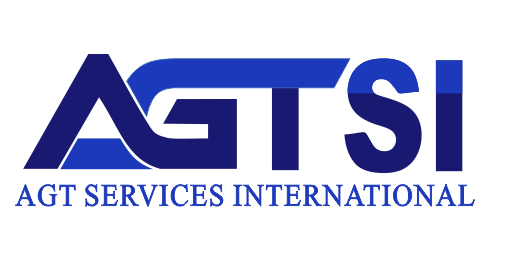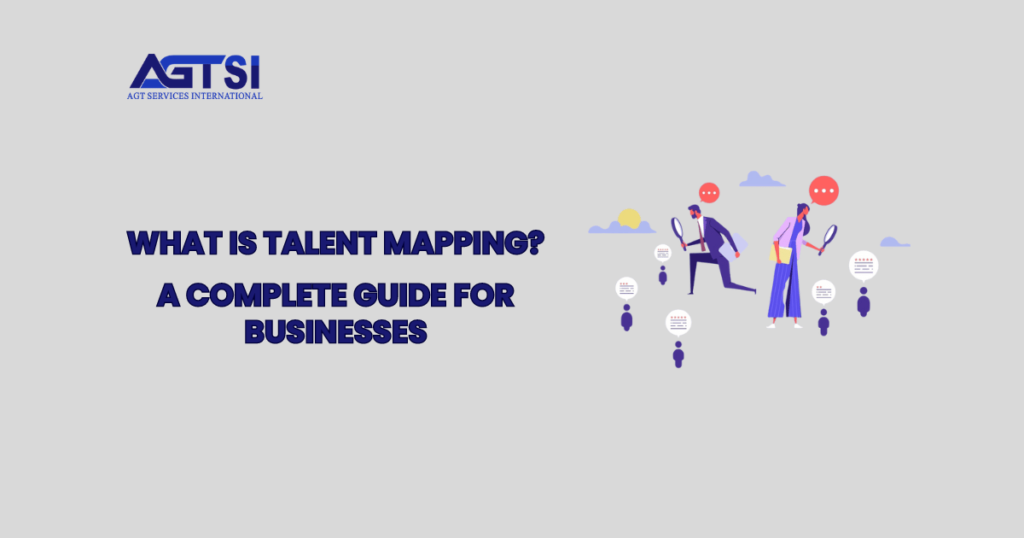Introduction
Talent mapping is an essential strategic tool for organizations aiming to align their workforce with business goals. By proactively identifying, assessing, and developing talent, businesses can ensure they have the right people in the right roles at the right time. This comprehensive guide will explore what talent mapping is, its benefits and challenges, and provide a step-by-step process to implement an effective talent mapping strategy.
What is Talent Mapping?
Talent mapping is a strategic approach to evaluating and planning for an organization’s current and future talent needs. It involves identifying the skills and competencies required to achieve business goals and assessing whether these skills are available within the existing workforce or need to be sourced externally. Unlike immediate recruitment efforts, talent mapping focuses on long-term planning and development, ensuring that the organization is well-prepared for future challenges.
Recommended: 9 Budget-Friendly Tips for Efficient Hiring
Why is Talent Mapping Important?
In today’s competitive business environment, having a robust talent strategy is crucial. Talent mapping helps organizations:
1. Align Talent with Business Strategy
By understanding the skills needed to achieve business goals, companies can ensure their workforce is strategically aligned.
2. Identify Skill Gaps
Proactively identifying areas where skills are lacking allows for targeted development and recruitment efforts.
3. Enhance Employee Development
Providing clear career paths and development opportunities helps retain top talent and build a strong internal talent pipeline.
4. Improve Succession Planning
Ensuring that potential successors are identified and developed reduces the risk of key positions being unfilled.
Key Benefits of Talent Mapping
1. Identifying and Filling Skills Gaps
Identifying and filling skills gaps is one of the key benefits of talent mapping because it allows organizations to proactively address deficiencies in their workforce. According to McKinsey & Company, 87% of businesses report experiencing skills gaps or anticipate they will in the near future. Talent mapping helps companies pinpoint these gaps by thoroughly assessing current employee skills against future business needs.
This insight enables businesses to take targeted actions, such as recruiting new talent or developing existing employees, to ensure they have the necessary skills to meet their strategic goals. By addressing skills gaps proactively, organizations can maintain a competitive edge, improve productivity, and enhance overall performance.
2. Defining Comprehensive Learning and Development Strategies
Defining comprehensive learning and development strategies is a key benefit of talent mapping because it enables organizations to identify the specific skills required for future success and design targeted programs to cultivate these skills within their workforce. By doing so, companies ensure that employees are well-equipped to meet the evolving demands of the business, enhancing individual performance and contributing to the overall organizational capability.
This proactive approach to skill development not only helps in closing current skills gaps but also prepares the workforce for future challenges, driving the business forward and maintaining a competitive edge in the market.
Recommended: What Are the Essentials of a Good Selection Policy?
3. Retaining Top Talent
Retaining top talent is a critical benefit of talent mapping, as it addresses the aspirations and career development needs of high-performing employees. Top performers are typically eager for growth and advancement opportunities, and talent mapping provides a structured approach to identify and outline these paths. By creating clear career trajectories and tailored development plans, organizations can significantly boost employee engagement and satisfaction.
When employees understand how they can progress within the company and see that their future goals align with the organization’s strategic direction, they are more likely to remain loyal and committed. This not only reduces turnover but also ensures that the organization retains its most valuable assets, fostering a culture of continuous improvement and long-term success.
4. Facilitating Succession Planning
Effective talent mapping plays a crucial role in facilitating succession planning by identifying potential successors for key roles within the organization. This proactive approach ensures that there is a pipeline of qualified and capable individuals ready to step into critical positions as needed.
By focusing on the development of these potential leaders, companies can maintain business continuity and mitigate the risks associated with the unexpected departure of key staff members. This not only secures the organization’s operational stability but also boosts employee morale and engagement, as employees see clear pathways for their career advancement.
5. Enhancing Workforce Planning
Talent mapping significantly enhances workforce planning by providing detailed insights into both the current and future talent landscape. By identifying the skills required to meet business objectives and pinpointing existing skill gaps, organizations can allocate resources more efficiently.
This proactive approach ensures that the right people are placed in the right roles at the right time, thereby optimizing productivity and achieving strategic goals. With a clear understanding of talent distribution and future needs, businesses can develop targeted recruitment and development strategies, ultimately fostering a more agile and responsive workforce.
Recommended: 13 Techniques for Building Employee Empowerment include
Challenges of Talent Mapping
Despite its benefits, talent mapping can be challenging. Some common obstacles include:
1. Resource-Intensive Process
The resource-intensive nature of talent mapping presents a significant challenge due to the extensive time and effort required to collect and analyze comprehensive data on both current and future talent needs. This process demands a high level of collaboration across various departments to ensure alignment with the overall business strategy. It involves detailed assessments, performance reviews, skills inventories, and continuous feedback, which are necessary to maintain accurate and up-to-date information.
Furthermore, the analysis of this data to identify trends, gaps, and opportunities requires sophisticated analytical tools and expertise. The ongoing need to update and refine the talent mapping strategy as business objectives evolve adds another layer of complexity, making it a resource-heavy endeavor that requires sustained commitment and coordination across the organization.
2. Data Collection and Analysis
Accurate and comprehensive data collection and analysis are fundamental to successful talent mapping, but they present significant challenges. Gathering data involves compiling detailed information about employees’ skills, performance, and potential, which can be time-consuming and complex. The difficulty is compounded if this data is stored across various systems that don’t integrate well, leading to fragmentation and inconsistency. Analyzing this disparate data requires sophisticated tools and expertise to ensure it is accurate and actionable.
Without seamless data integration and analysis, organizations risk making uninformed decisions that could hamper their talent strategy and overall business goals.
Recommended: What is an Employer of Record (EOR)? A Complete Guide
3. Predicting Long-Term Talent Needs
Predicting long-term talent needs poses a significant challenge in talent mapping due to the ever-evolving nature of business environments. Market changes, technological advancements, and external factors such as economic shifts or new regulatory requirements can drastically alter the skills and competencies that organizations need to succeed in the future.
As a result, what seems essential today may become obsolete tomorrow, making it difficult to forecast accurately which talents will be crucial years down the line. This uncertainty requires organizations to remain agile, continuously reassessing and updating their talent strategies to adapt to these unpredictable changes and ensure they can meet future demands effectively.
4. Ensuring Company-Wide Buy-In
Ensuring company-wide buy-in is a significant challenge in talent mapping because it demands the commitment and collaboration of the entire organization, from top leadership to individual employees. Leaders must understand and advocate for the strategic importance of talent mapping, aligning it with the company’s overall goals. Middle managers need to actively participate in identifying and nurturing talent within their teams.
Employees must be engaged and see the value in the process for their own career development. Without this collective support, talent mapping efforts can face resistance, lack of participation, and ultimately fail to deliver the desired outcomes, making it difficult to implement and sustain an effective talent mapping strategy.
Recommended: LinkedIn Recruit Right Strategies
How to Implement Talent Mapping?
Implementing talent mapping involves several key steps:
Step 1: Define Business Objectives and Talent Needs
Start by clearly defining your business objectives. What are your long-term goals? What skills and competencies will be required to achieve these goals? Engage with key stakeholders to ensure alignment between your talent strategy and business strategy.
Step 2: Identify Critical and Scarce Skills
Identify the skills that are critical to your organization’s success and assess their availability. Consider factors such as the importance of each skill to your business goals and the availability of these skills in the market.
Step 3: Assess Current Talent
Conduct a thorough assessment of your current workforce. Evaluate employees’ skills, experience, and potential. Use tools such as performance reviews, skills assessments, and feedback from managers to gather comprehensive data.
Step 4: Identify Talent Gaps
Compare the skills and competencies of your current workforce with the requirements of your key roles. Identify any gaps and determine the urgency of addressing these gaps.
Step 5: Develop a Talent Strategy
Develop a strategy to address the identified gaps. This may involve recruiting new talent, developing current employees, or a combination of both. Focus on creating targeted learning and development programs and defining clear career paths.
Step 6: Implement and Monitor the Strategy
Implement your talent strategy and continuously monitor its effectiveness. Use metrics and KPIs to track progress and make adjustments as needed. Regularly review and update your talent mapping process to ensure it remains aligned with your business objectives.
Recommended: What is Offshore Recruitment?
Using Skills Tests for Talent Mapping
Skills tests are a valuable tool for talent mapping. They provide objective data on employees’ skills and competencies, helping to identify strengths and areas for improvement. Here’s how you can use skills tests effectively:
1. Identify the Skills to Measure
Determine the specific skills you need to assess. This will depend on your business goals and the critical and scarce skills identified during the talent mapping process.
2. Choose the Right Tests
Select tests that are tailored to the skills you need to measure. There are various types of skills tests available, including technical skills, cognitive abilities, and soft skills assessments.
3. Analyze the Results
Once employees have completed the tests, analyze the results to identify skills gaps and strengths. Use this data to inform your talent strategy and development programs.
4. Regular Testing
Administer skills tests regularly to track progress and ensure that your talent development initiatives are effective. This will help you make data-driven decisions about hiring, training, and promoting employees.
Recommended: Recruiting vs Staffing
Best Practices for Effective Talent Mapping
To maximize the effectiveness of talent mapping, consider these best practices:
1. Involve Key Stakeholders
Engage leaders and managers in the talent mapping process to ensure alignment with business objectives. Their input is crucial for identifying critical skills and developing effective strategies.
2. Use Data-Driven Insights
Leverage data analytics to gain accurate insights into your workforce. Use this data to make informed decisions about recruitment, development, and succession planning.
3. Regular Updates
Continuously review and update your talent mapping strategy to reflect changes in your business environment. This ensures that your talent strategy remains relevant and effective.
4. Focus on Diversity and Inclusion
Promote diversity and inclusion in your talent strategy. A diverse workforce brings different perspectives and ideas, driving innovation and better decision-making.
5. Employee Engagement
Keep employees informed and involved in their development plans. Foster a culture of continuous improvement and encourage employees to take an active role in their career growth.
Recommended: Employee suggestions for company improvement
Talent Mapping: Final Thoughts
Talent mapping is a powerful strategy that can transform your business by ensuring you have the right talent in place to achieve your goals. By understanding the skills needed for future success, identifying and addressing skills gaps, and developing a robust talent strategy, organizations can stay ahead of the competition and drive long-term growth.
Implementing an effective talent mapping process requires thoughtful planning, data-driven insights, and ongoing commitment from all levels of the organization. By following the steps and best practices outlined in this guide, you can create a talent mapping strategy that supports your business objectives and helps you build a strong, capable workforce.



















